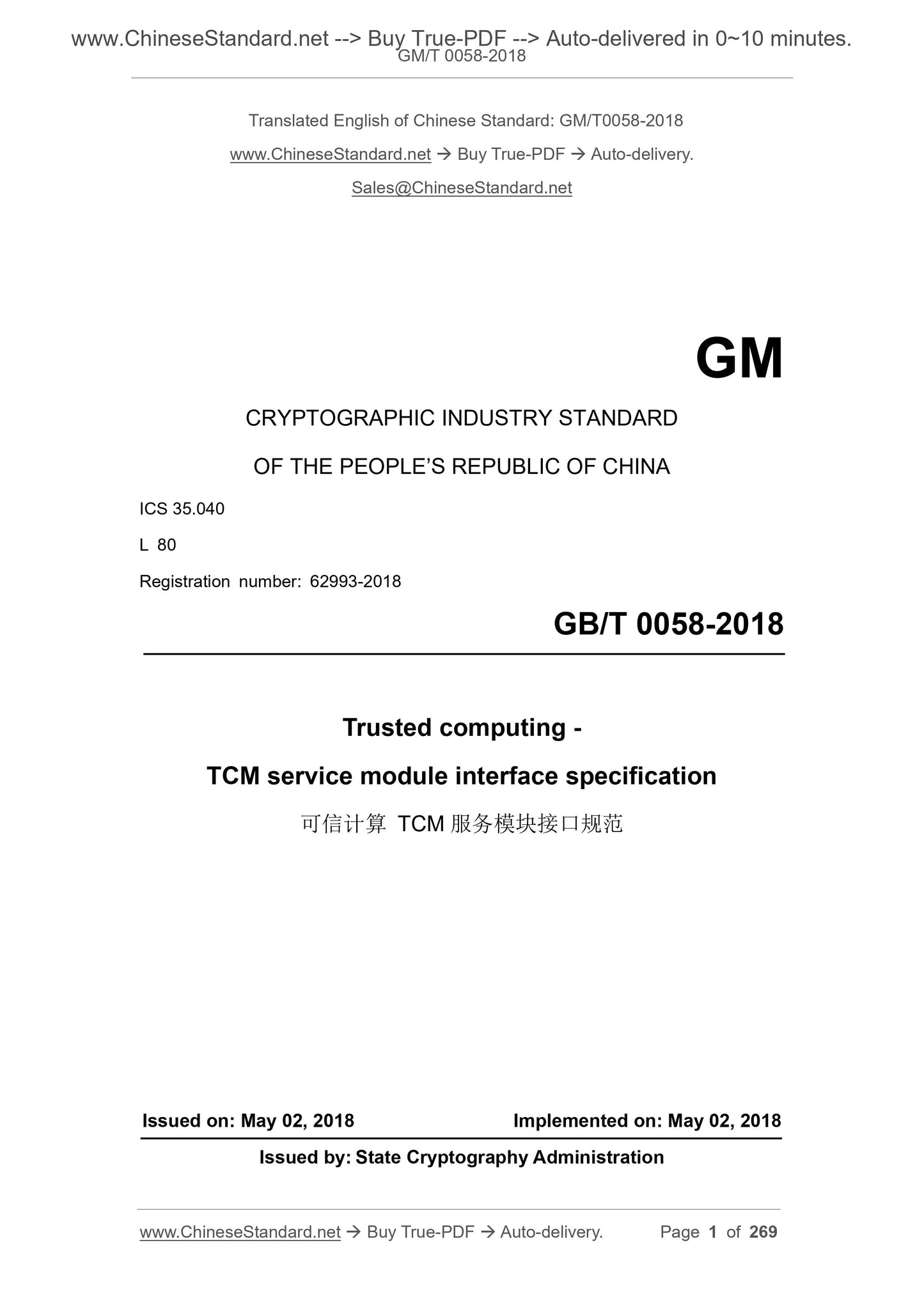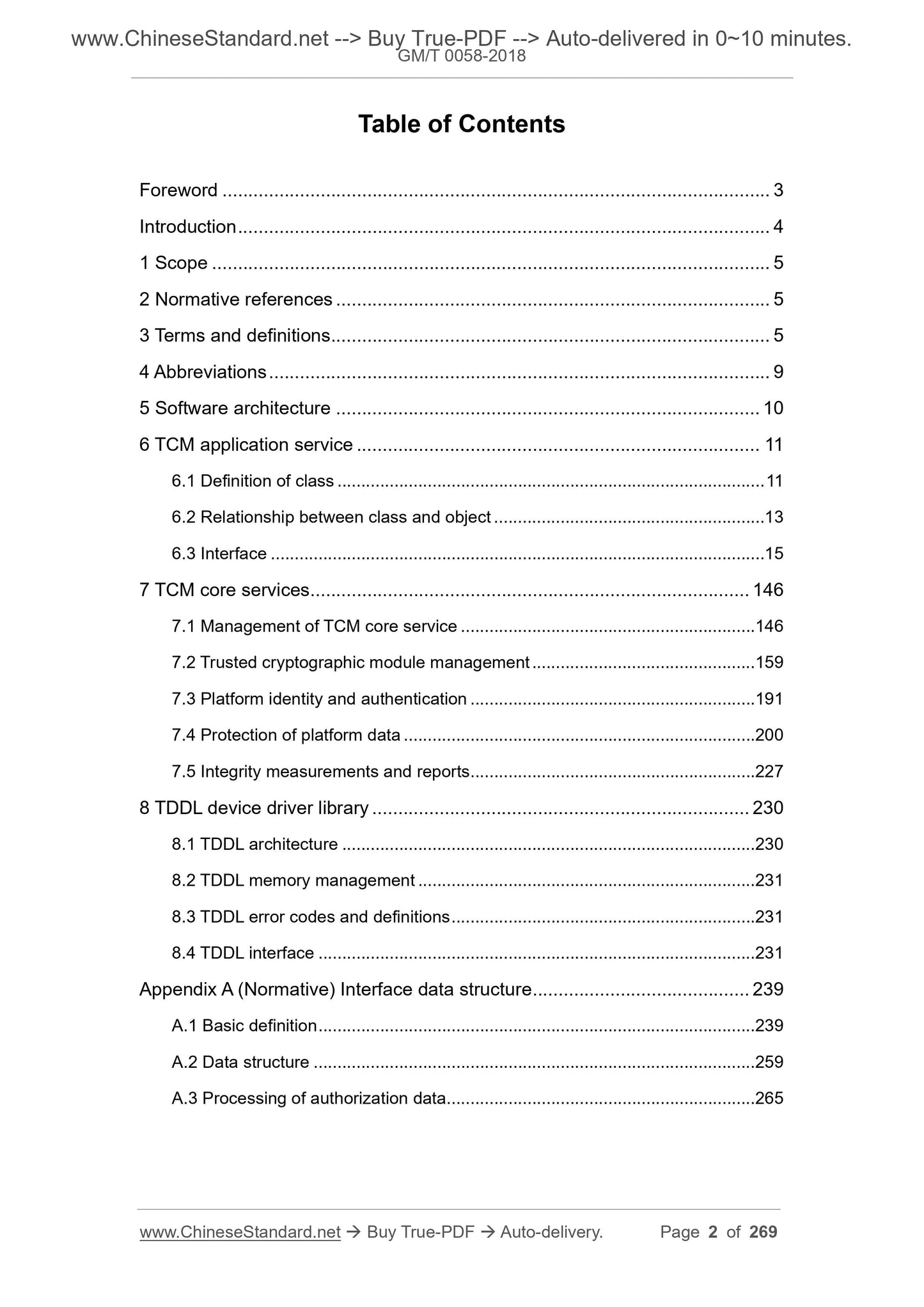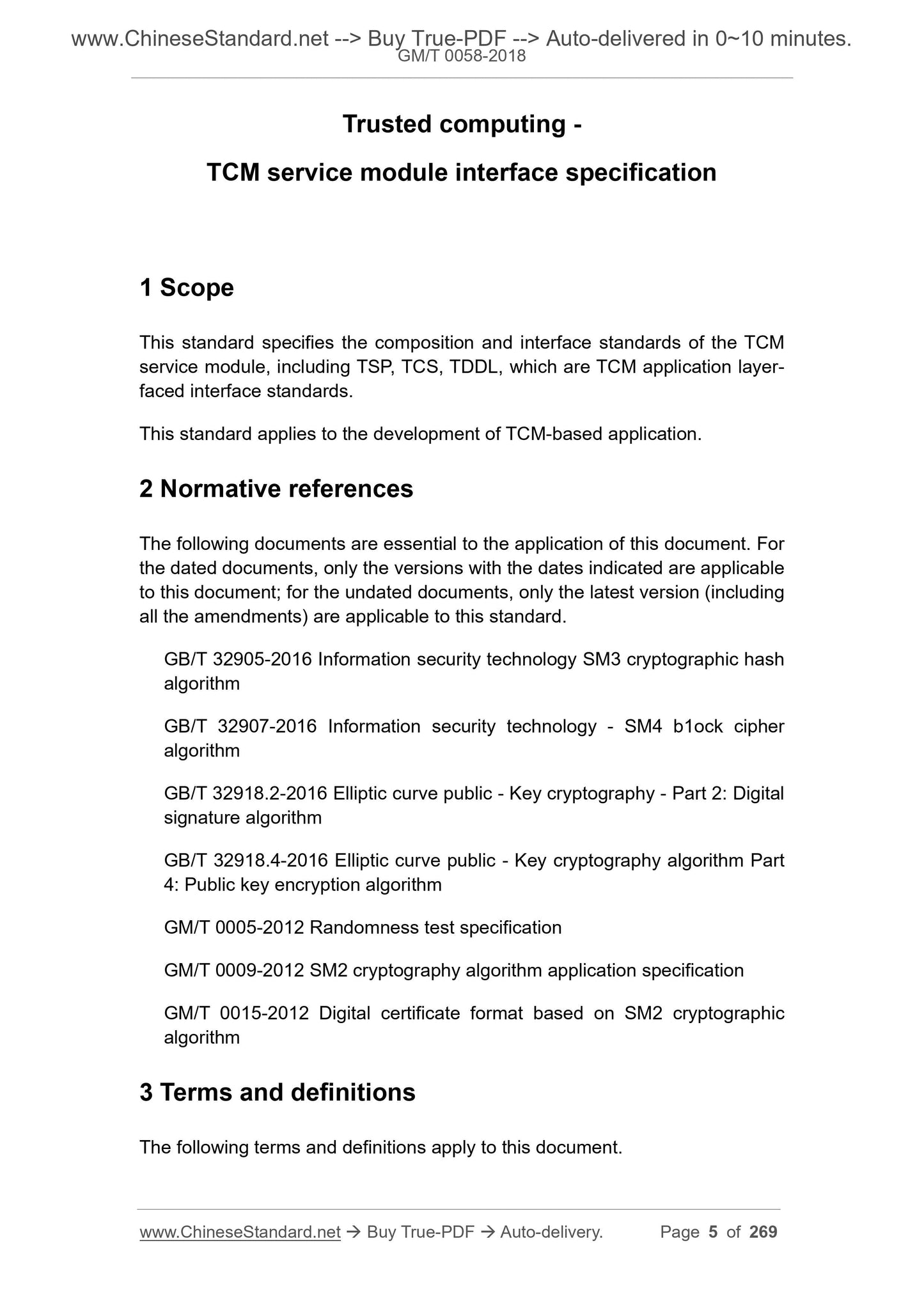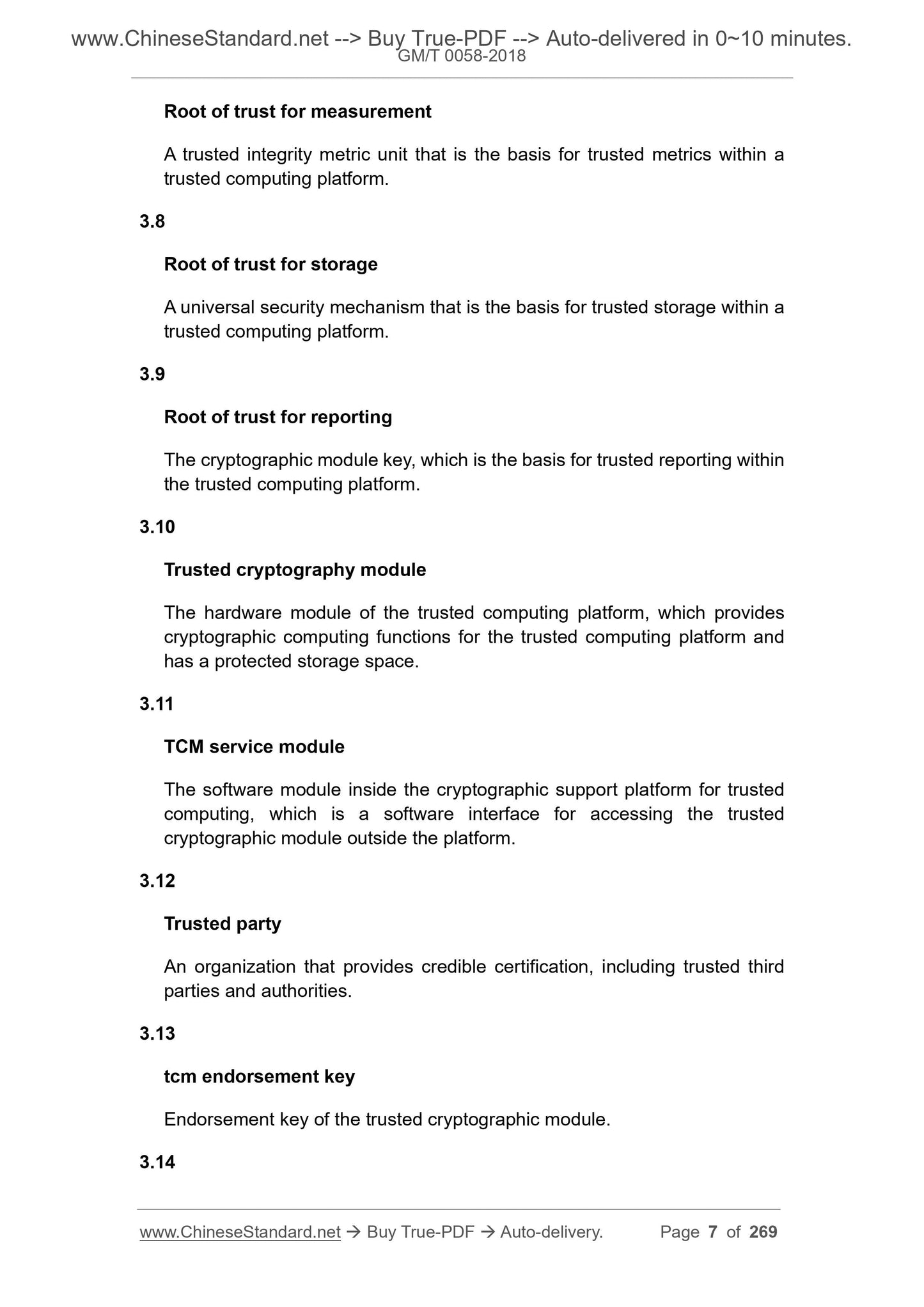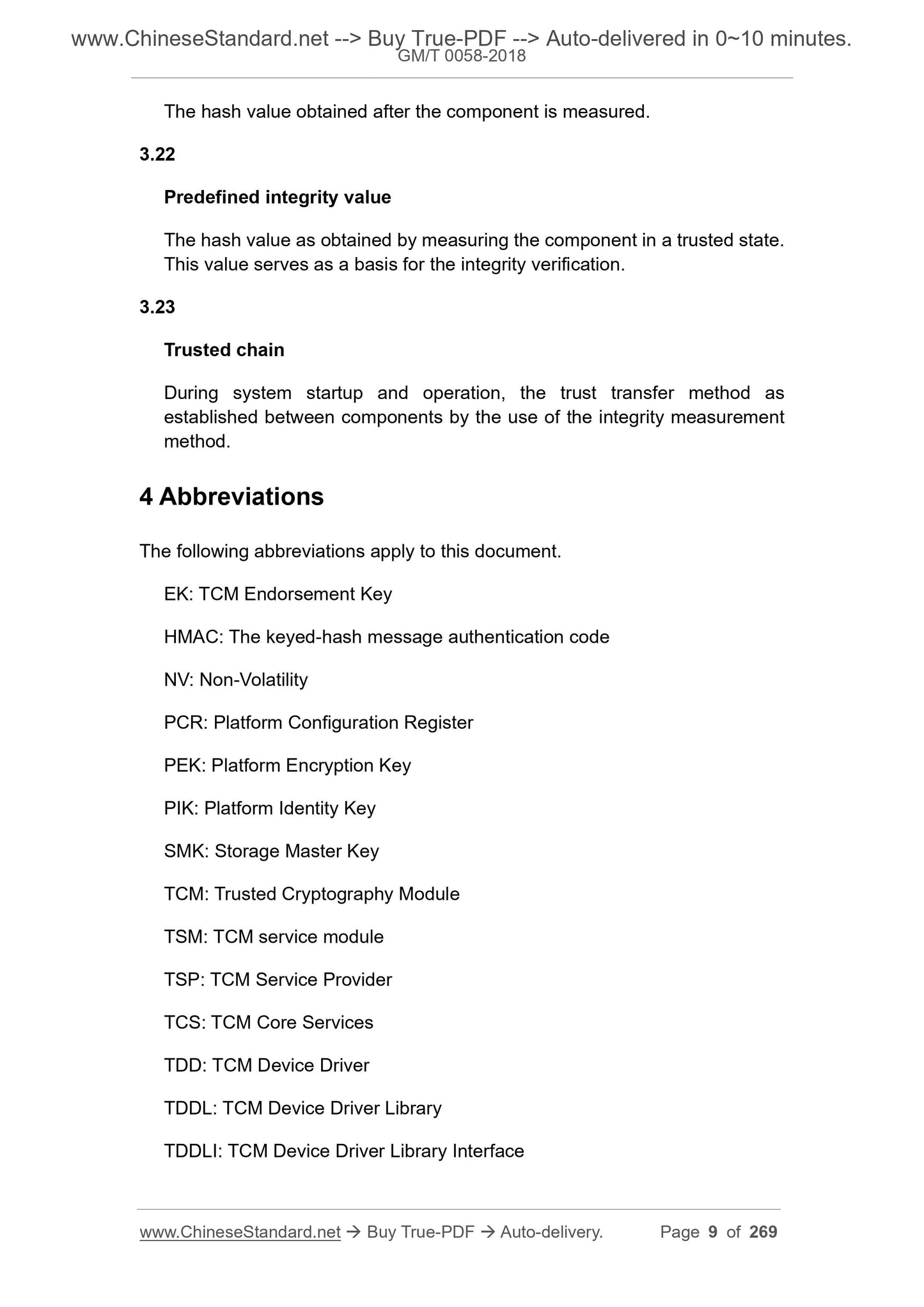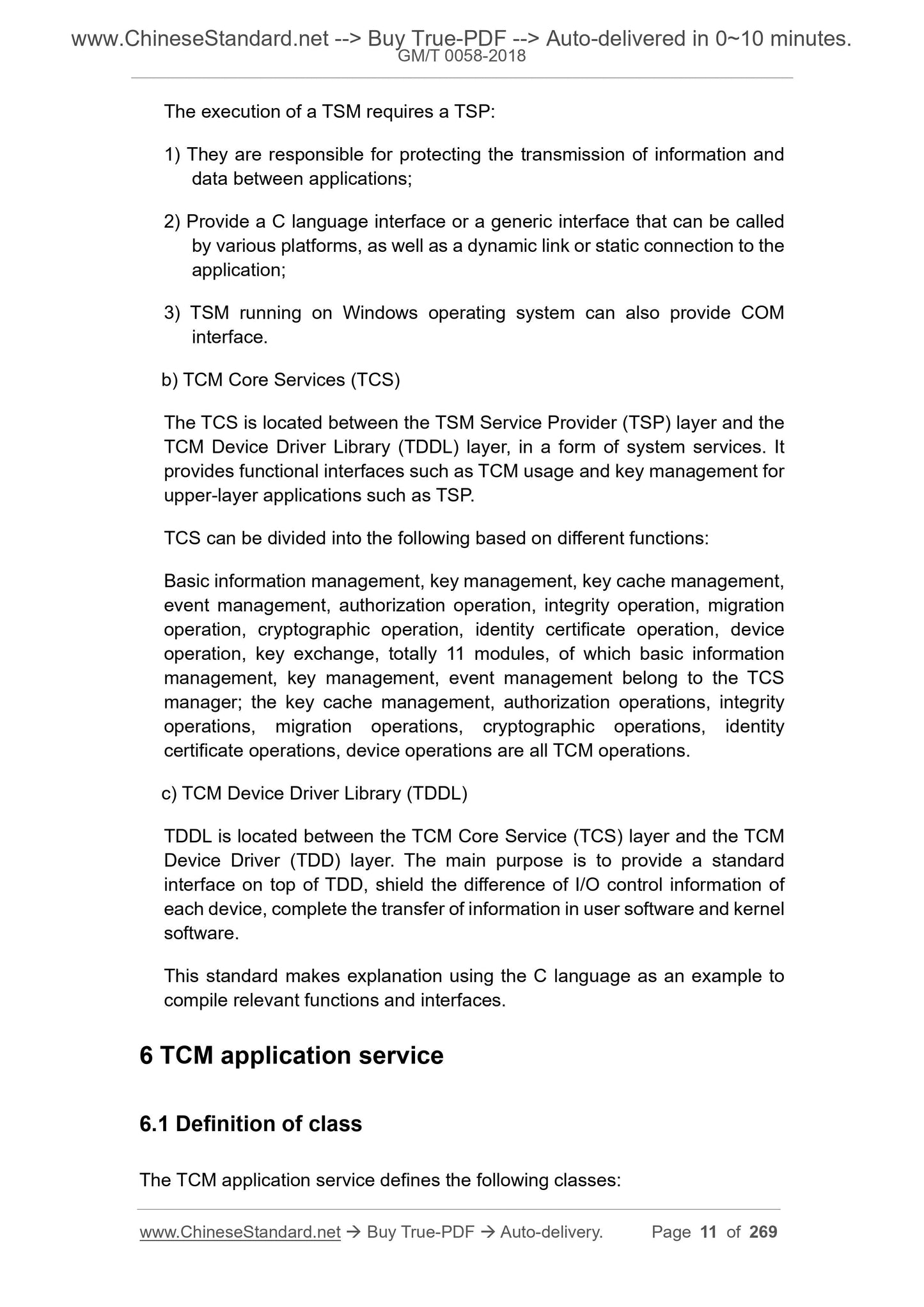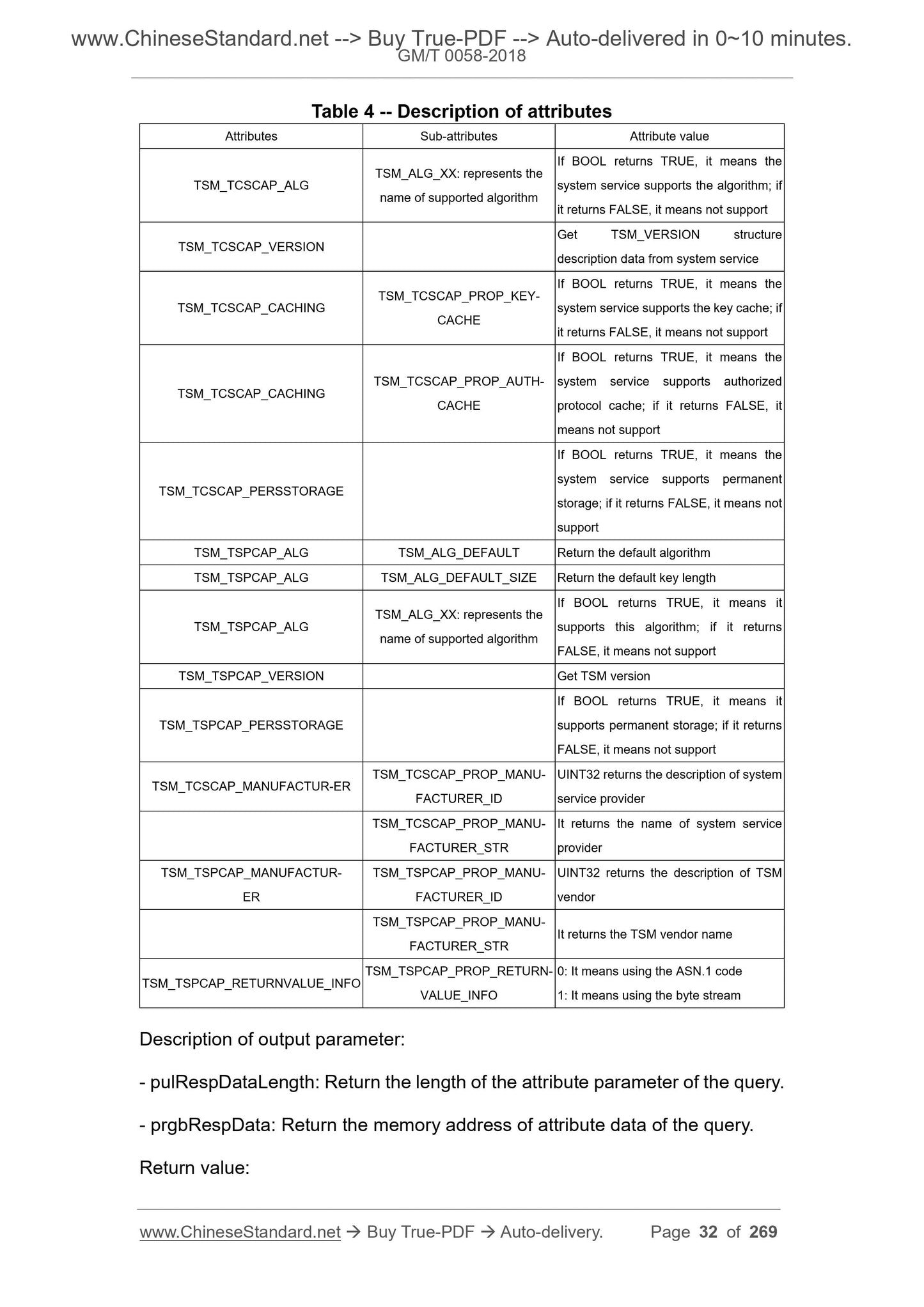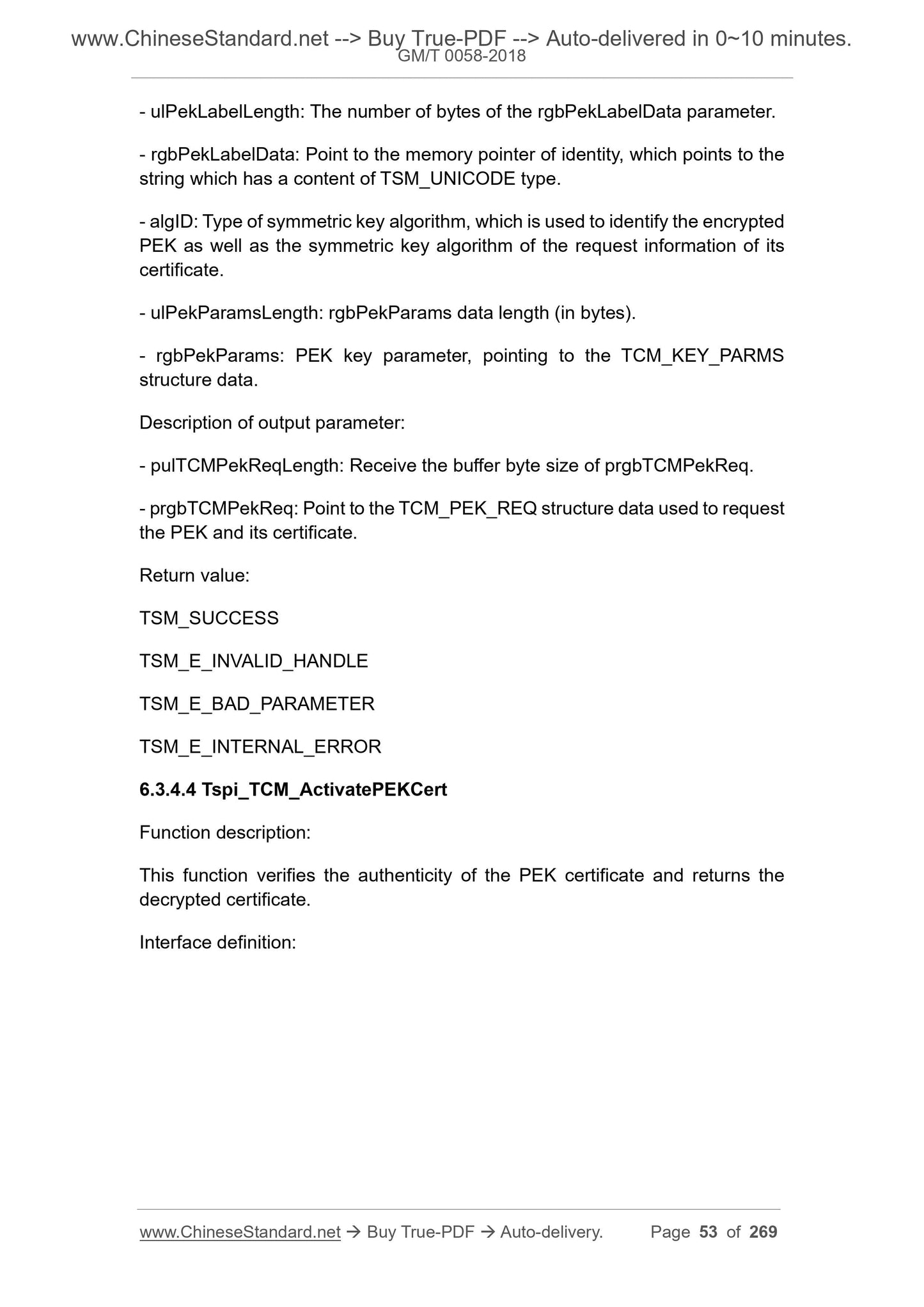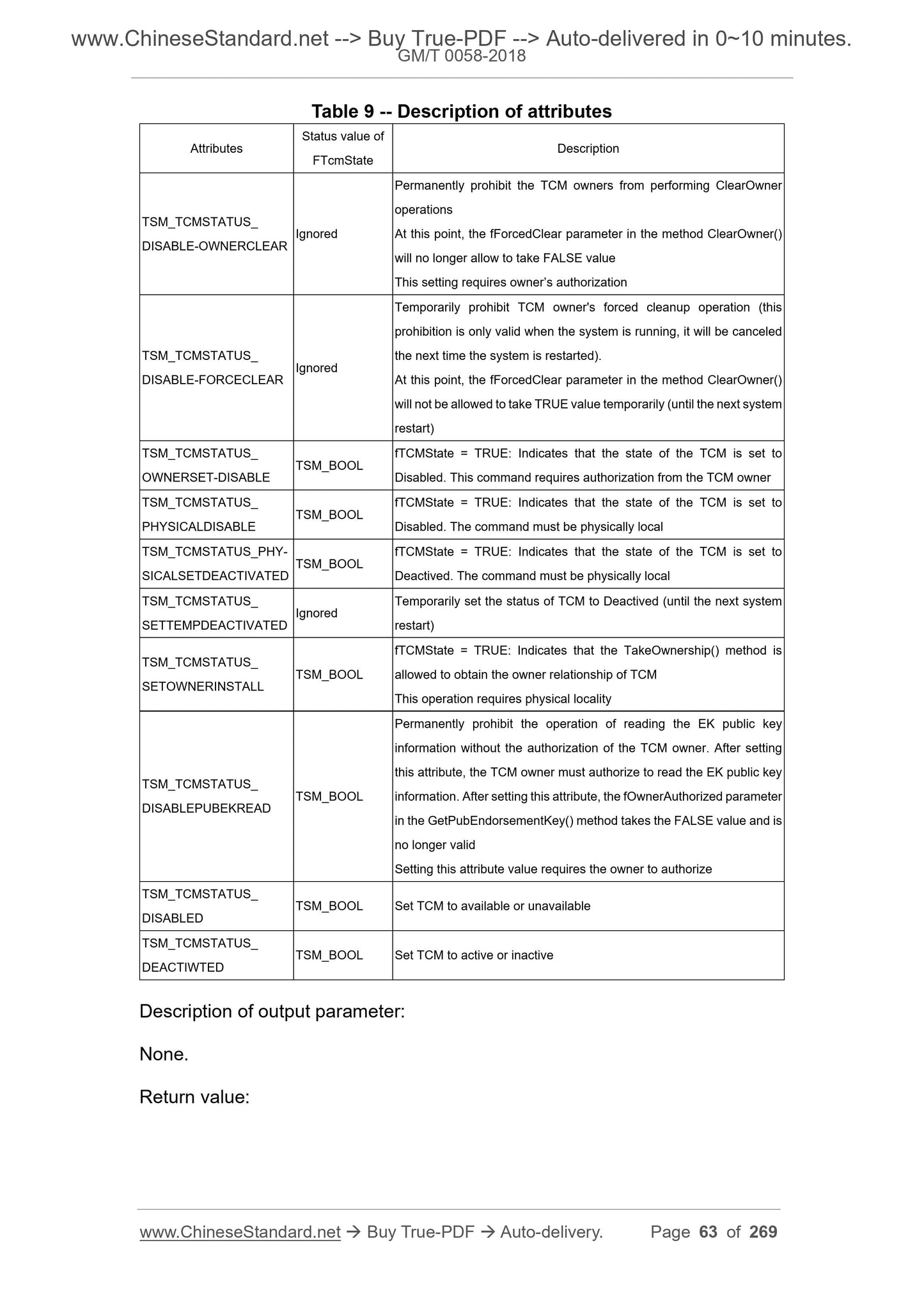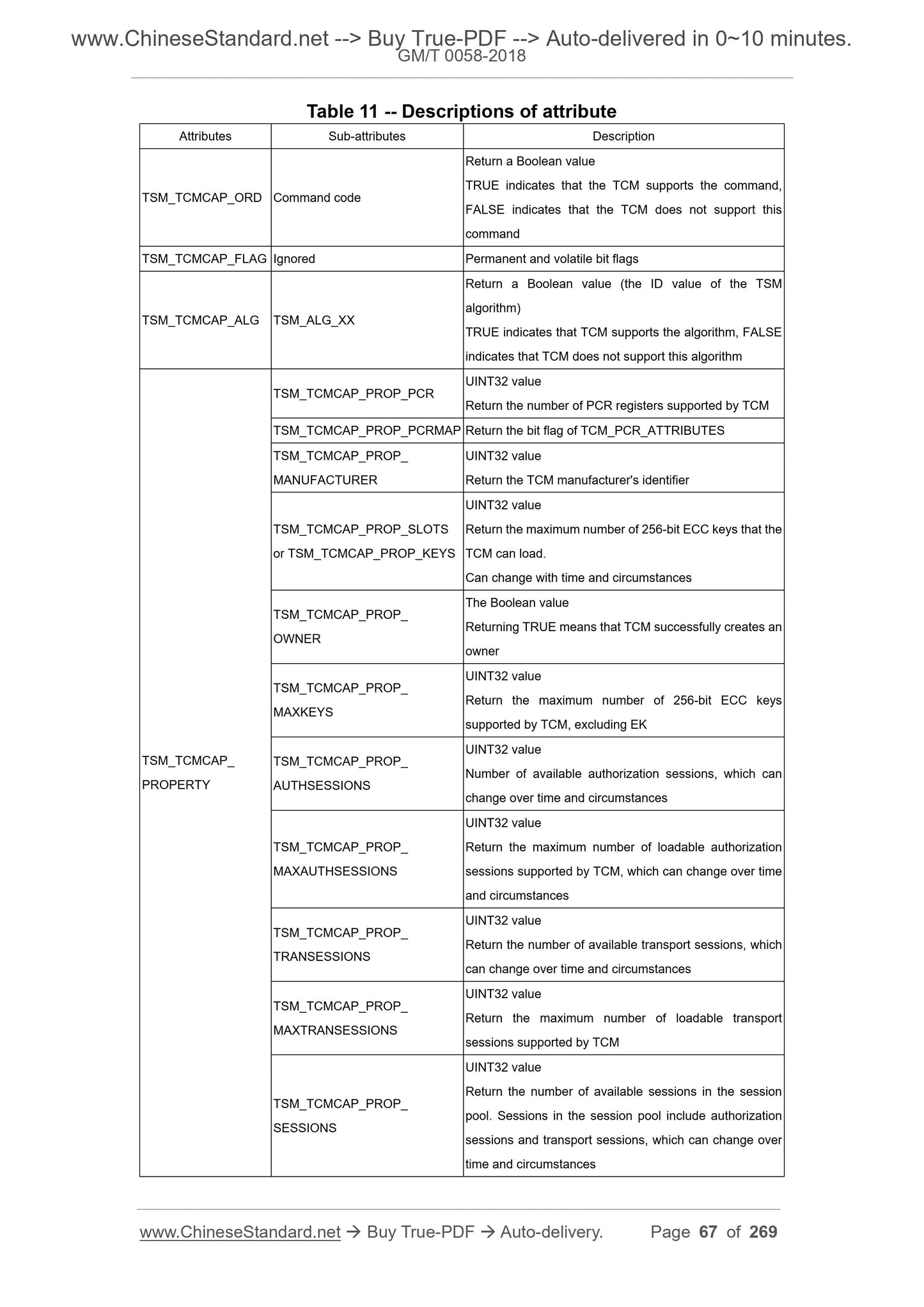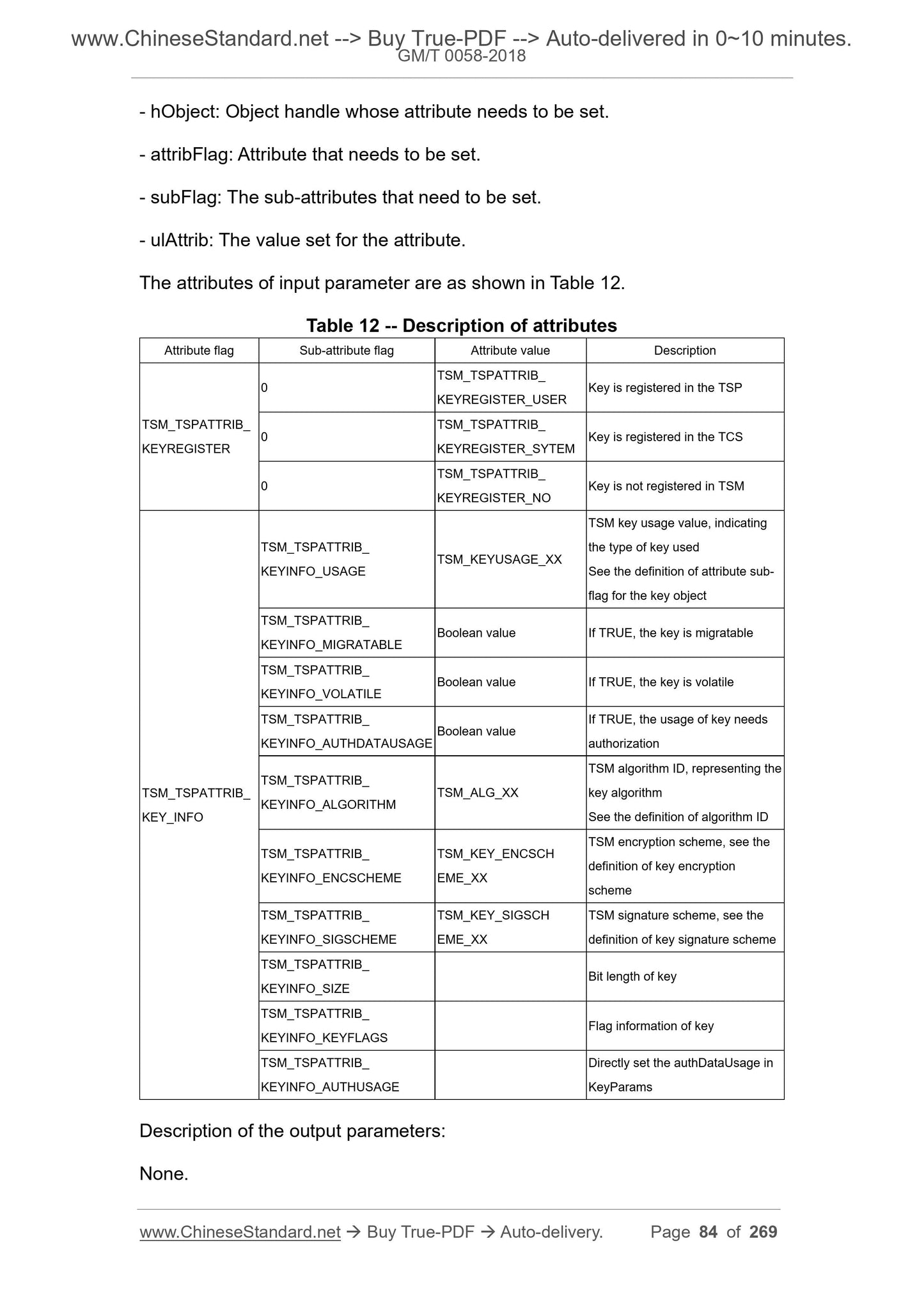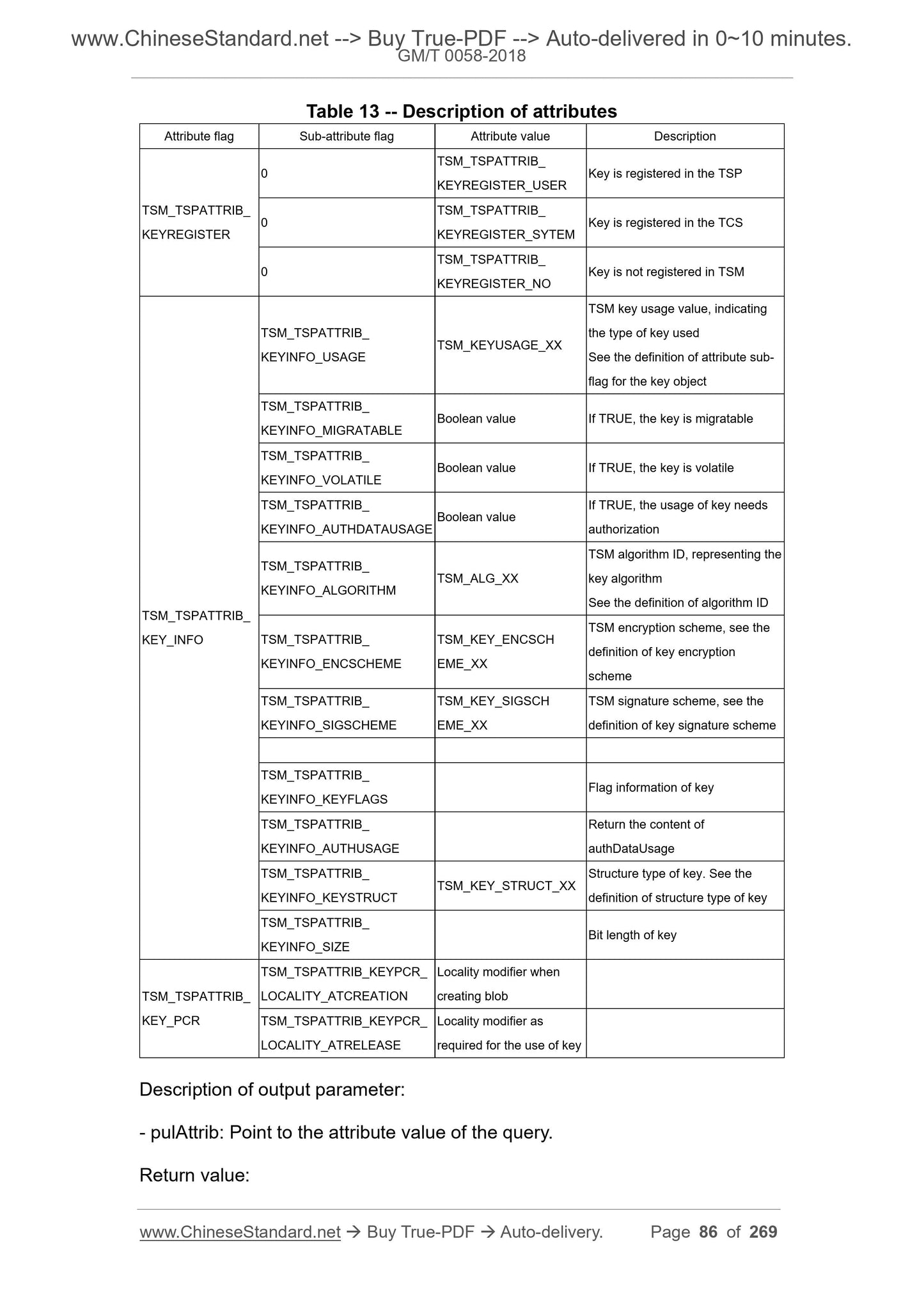1
/
of
12
www.ChineseStandard.us -- Field Test Asia Pte. Ltd.
GM/T 0058-2018 English PDF (GM/T0058-2018)
GM/T 0058-2018 English PDF (GM/T0058-2018)
Regular price
$610.00
Regular price
Sale price
$610.00
Unit price
/
per
Shipping calculated at checkout.
Couldn't load pickup availability
GM/T 0058-2018: Trusted computing - TCM service module interface specification
Delivery: 9 seconds. Download (and Email) true-PDF + Invoice.Get Quotation: Click GM/T 0058-2018 (Self-service in 1-minute)
Newer / historical versions: GM/T 0058-2018
Preview True-PDF
Scope
This standard specifies the composition and interface standards of the TCMservice module, including TSP, TCS, TDDL, which are TCM application layer-
faced interface standards.
This standard applies to the development of TCM-based application.
Basic Data
| Standard ID | GM/T 0058-2018 (GM/T0058-2018) |
| Description (Translated English) | Trusted computing - TCM service module interface specification |
| Sector / Industry | Chinese Industry Standard (Recommended) |
| Classification of Chinese Standard | L80 |
| Word Count Estimation | 193,150 |
| Date of Issue | 2018-05-02 |
| Date of Implementation | 2018-05-02 |
| Issuing agency(ies) | State Administration of Cryptography |
Share
